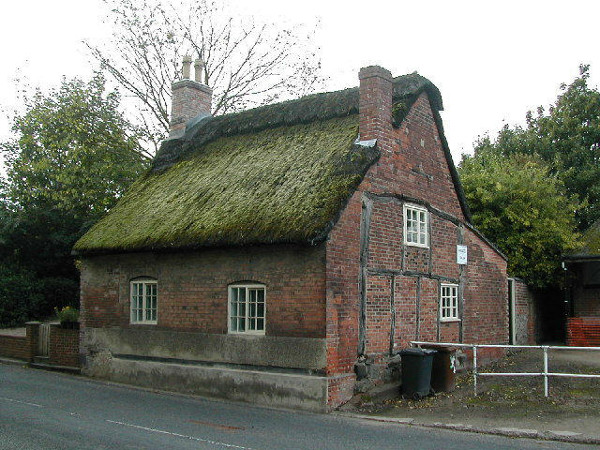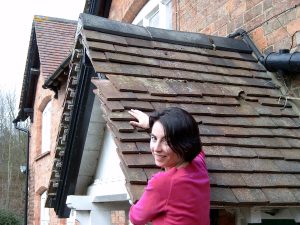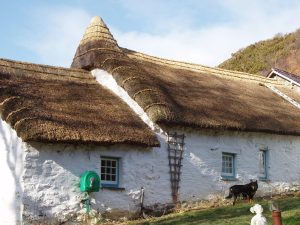Removing the moss from your roof is a topic that is widely debated. Does it do more damage to leave the moss growing on your tiles or does removing it harm your roof even more?
Moss and algae tend to grow in damp, shaded areas and can cause damage to your roof both directly and indirectly. If you allow large patches of moss to grow on your roof, these patches hold water against the surface of the roof, which can cause the roofing materials to rot. In addition, the water trapped by the moss pools in gaps between your roof’s tiles, and as that water freezes and thaws it can pull the tiles apart, causing even more damage! However, removing your moss can be just as dangerous and cause just as much damage.
If you’re thinking about getting someone in to clean your roof for you, or you’re going to give it a go yourself this weekend, think about the following points before climbing that ladder…
Structural issues
Roofs are not designed to hold the weight of a person or to be walked on. Many roof cleaning companies will state that they need to actually send someone up on to the roof in order to remove the moss. This can actually do more damage than it’s worth. Broken tiles and the risk of injury are just a couple of reasons why you should never stand on your roof. If you need to clear your gutters or retrieve something from your roof, always use a ladder and never over-reach. You could end up doing more damage to yourself than good to your roof.
Chain reaction
Even cleaning chemicals that are specially designed for use on roofs can still cause irreversible damage particularly on exposed areas of lead flashing around chimneys. A chemical reaction between the cleaning solution and the lead can result in a stained roof, as well as structural damage.

Moss on a slate roof.
It’s all about the tiles
Whilst a mossy roof might not be aesthetically pleasing, you could end up in a lot more trouble should you decide to remove the spongy green invader from your roof tiles. When moss grows in, under and around your roof tiles, it actually acts as a filler; packing out any gaps and plugging the spaces. Destroy the moss and those tiles that were previously held up by it are likely to settle back down in an awkward way. This could result in a roof that isn’t water tight, leading to bigger problems down the road.
If you still can’t bear the sight of your mossy roof, consider this:
A fairy tale look
Some people like the rustic look that mossy roofs create. This look can be particularly attractive for period properties. If you have a steeply pitched roof, and the weather is generally warm for most of the year, you might decide that the minor risk of shortening the lifespan of the roof is worth it for the attractive, fairy tale look.
Moss and biodiversity
Green, or “living” roofs are popular in eco-friendly communities. Growing moss, grass or plants on your roof is a good way to cut down on heating costs (thanks to the insulating properties of the moss), and also improve biodiversity. If you allow local moss, algae and flora to grow on your roof then you are providing a habitat for local insects and animals.
If you are interested in encouraging biodiversity in your area, consider creating a proper living roof, rather than simply allowing moss to grow on your existing tiles. A properly designed living roof is waterproof, and has a root barrier which prevents the surface of your roof from becoming damaged. Larger “living” roofs are also reinforced, to ensure that they can cope with the extra weight from the water, soil and plants.
At the end of the day, leaving the moss on your roof will damage the tiles ever so slightly, but removing the moss could result in much more costly repairs to the roof structure. The best thing you can do if you’re considering removing the moss from your roof is talk directly to your roofer. They will be able to give you professional advice.
Finally, a note on safety
Cleaning a roof requires specialist equipment. If you do not have the right kind of ladders, safety harnesses or anchors, do not attempt to work on your own roof.
If you are not sure how to clean a roof safely, or what kind of roofing supplies you will need to fix damaged tiles or slates, then you should seek professional help. Working at a height is dangerous, and if you damage your roof it could be expensive to repair it. If damage to tiles or shingles goes undetected, you could end up with a problem that affects other parts of your home.
The chemicals used to remove moss from roofs can be harmful to plants and small animals. If you do choose to clean your roof with chemicals, cover large plants with a waterproof sheet before starting, and soak the root areas around any shrubs and trees before and after the cleaning process, to minimise any damage to the plants.






3 Comments
http://www.nfrc.co.uk/article/2012/09/07/moss-on-your-roof-advice – seems the National Federation of Roofing Contractors are not too worried about it. Plus there’s a problem with dodgy doorstep callers offering to remove moss and paint your roof, and scaring people into parting with several hundred pounds. Also, biocide is usually part of the process, and personally, I’d take my chances with moss rather than dousing my house in poisons. Seems to be some people’s answer to everything – ants, garden pests, weeds, moss etc. – let’s poison it. What harm can it do?
Moss and lichens’ role in nature is to turn bare rock into soil, but the time scales involved are enormous. I’d take the NFRC’s advice and relax with your moss.
Concur.
A little solid research on the biology of moss alleviated concern.
Additional research exposes: the most insistent cries of “danger, danger!” hail from those who stand to profit from seeding this fear.
Thank you for an excellent article and nice photos. I hope you would consider another article to also talk about recent long-term studies / research that indicate Solar Panels are more efficient and last longer with a green roof under them. On very steep roofs, moss may be the only options. Besides the BioDiversity and insulation factors you mentioned, there could be significant profits is the longterm….. Or maybe even the short term, if the charm of ‘Fairy-Tale” looking homes adds to the property value for all concerned.